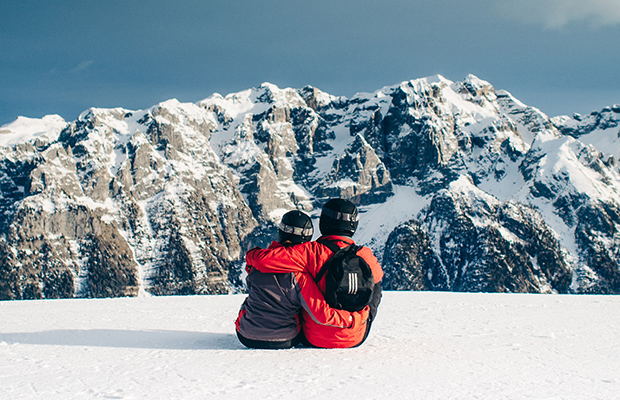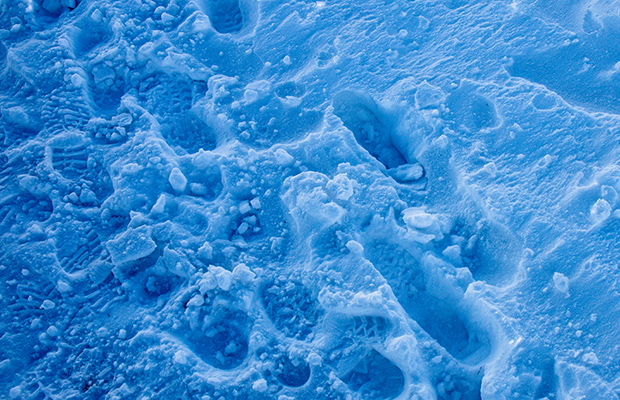
With everyone getting their fit on these days (hello, DB365) the search is always on for the latest and greatest way to boost performance, whether on the slopes, in the pool or even in your own home gym. And what’s hot right now? Well, the cold.
According to Cedric X. Bryant, PhD, the Chief Science Officer of the American Council on Exercise, one trend that’s pervaded all areas of health — from NFL locker rooms to the fanciest of spas — is using cold therapy and specifically freezing temperatures to aid recovery. “It’s in part fueled by the focus on high intensity interval training (HIIT),” Bryant explains. “With those more challenging workout efforts, individuals experience higher than normal levels of soreness, so there’s a lot more attention given to figuring out what we can do to help people recover from those challenging workout experiences.”
Purportedly, the cold speeds recovery by decreasing circulation to a specific area, resulting in less inflammation and swelling, also increasing the rate of muscle repair. But should you buy in to the big chill?
RELATED: 7 Post-Workout Tools to Aid Recovery
What’s Behind the Cold Front
Cold therapy is nothing new in the sports world. Tennis stars, elite runners and international soccer teams have been taking ice baths for years. “It was consistently shown that icing helped to reduce swelling associated with strains and sprains,” says Jonathan Peake, PhD, a professor of biomedical sciences at the Queensland University of Technology in Australia. “By reducing swelling, athletes could return to training more quickly.”
Then, there’s cryotherapy — basically an ice bath on steroids. A cryotherapy session involves a few minutes of total-body exposure to temperatures far below zero, and just like icing, purports to decrease muscle soreness by reducing inflammation, enabling athletes to train at a continually high level day after day. In 2011, word spread after athletes like sprinter Jason Gatlin and Dallas Mavericks shooting guard Jason Terry were booking appointments in the hyper-cold chambers.
RELATED: Could Cryotherapy Replace Athletes’ Ice Baths? One Writer Tells All
There has been an uptick in at-home recovery tools, too, like the Trigger Point TP Therapy Cold Roller or the SKLZ Cold Roller Ball, which employ the same cooling technology, in addition to aiding with muscle release.

So, Is Cold Therapy the Real Deal?
When it comes to the actual efficacy of cold treatments, the verdict is still unclear. “As with a lot of the emerging trends, popularity almost always outpaces the scientific evidence needed to support the claims that are made,” Bryant says.
For example, ice baths came into question this past summer, when a study in the Journal of Physiology found that athletes who submerged their bodies in cold water after a workout gained less muscle mass than those who did an active cool-down on a bike. Turns out your muscles need enough blood flow to grow stronger, so if you follow a strength session with cold temperatures that reduce circulation, you could be preventing their ability to do so.
“If the goal of a strength workout is to build muscle mass and strength, then cold therapy is probably not [great],” Peake, one of the study’s co-authors, says. “But if the goal is just to maintain muscle mass and strength, then there is probably no harm in doing cold therapy. The effects of cold therapy on aerobic workouts are not so clear as there is less evidence for any harmful — or beneficial — effects.”
RELATED: 10 Ways You’re Sabotaging Your Own Workout
Likewise, the benefits of cryotherapy are still up for debate — and remember, use any type of cryotherapy with extreme caution. The FDA has yet to approve the medical benefits of these chambers, and there is scant research to support their use in rehabilitation, Bryant says. Some people, athletes included, have developed frostbite from time in a chamber, and Nevada just set new cryotherapy regulations after one woman died in a chamber at the end of 2015.
And as for those coolant-infused products like foam rollers? Bryant sees no harm in using them like any other rollers: to provide targeted myofascial release. Whether they really offer faster recovery than non-cooling rollers remains to be seen.
Then there are the more experimental products, such as the Kickstarter-funded Cold Shoulder vest, which claims to burn calories while you’re just sitting down. If you’re skeptical, its not just you. (Anything that claims to burn calories while you do nothing should raise a red flag.)
RELATED: 7 Ways to Relieve Post-Workout Pain
Ultimately, it’s important to exercise smart judgment when using cold therapies. While a cold roller ball may be a quick and easy way to test the trend, you’ll probably want to check with your doctor before you step in a cryotherapy chamber. Only time will tell if this is a trend that stays its course or freezes up.
